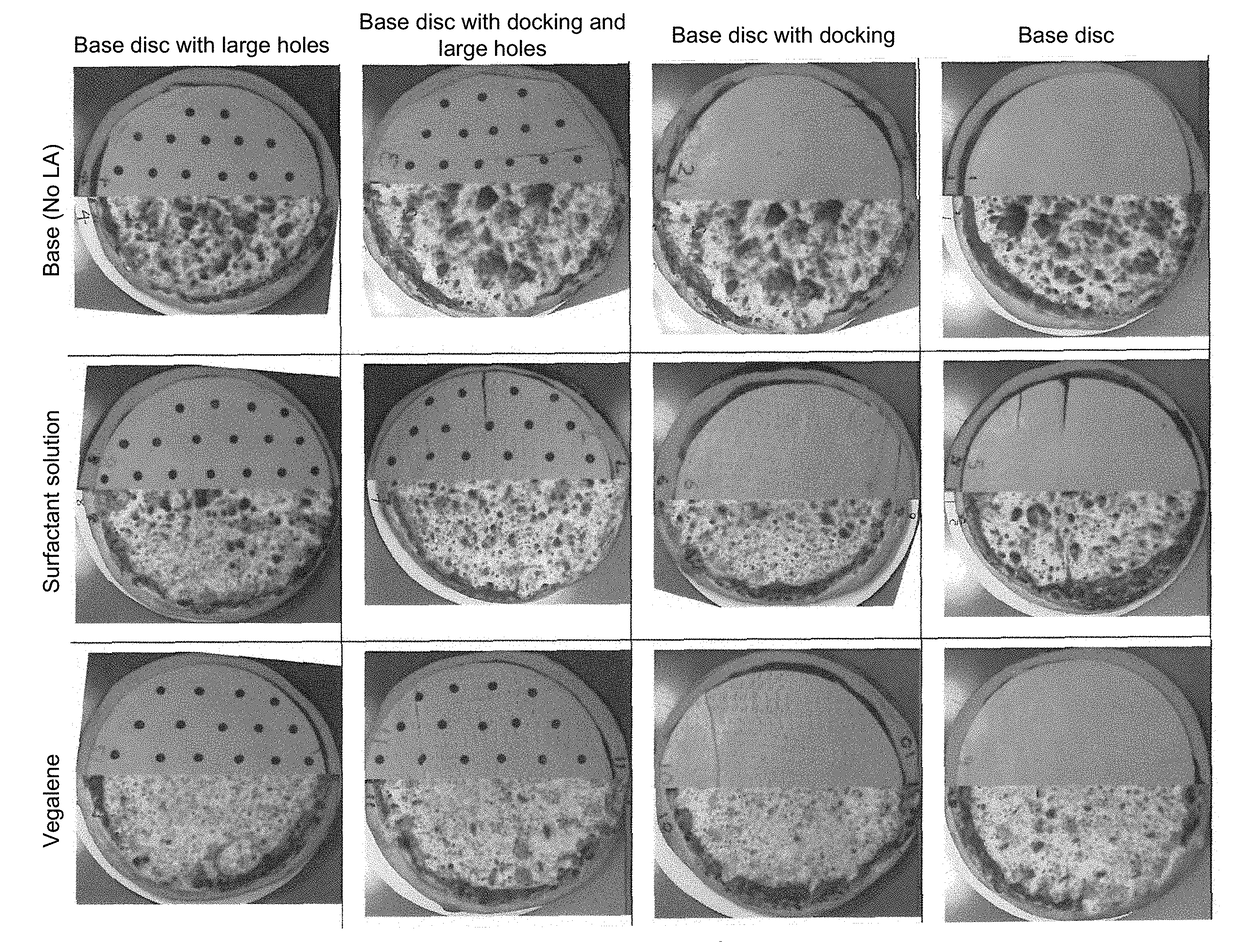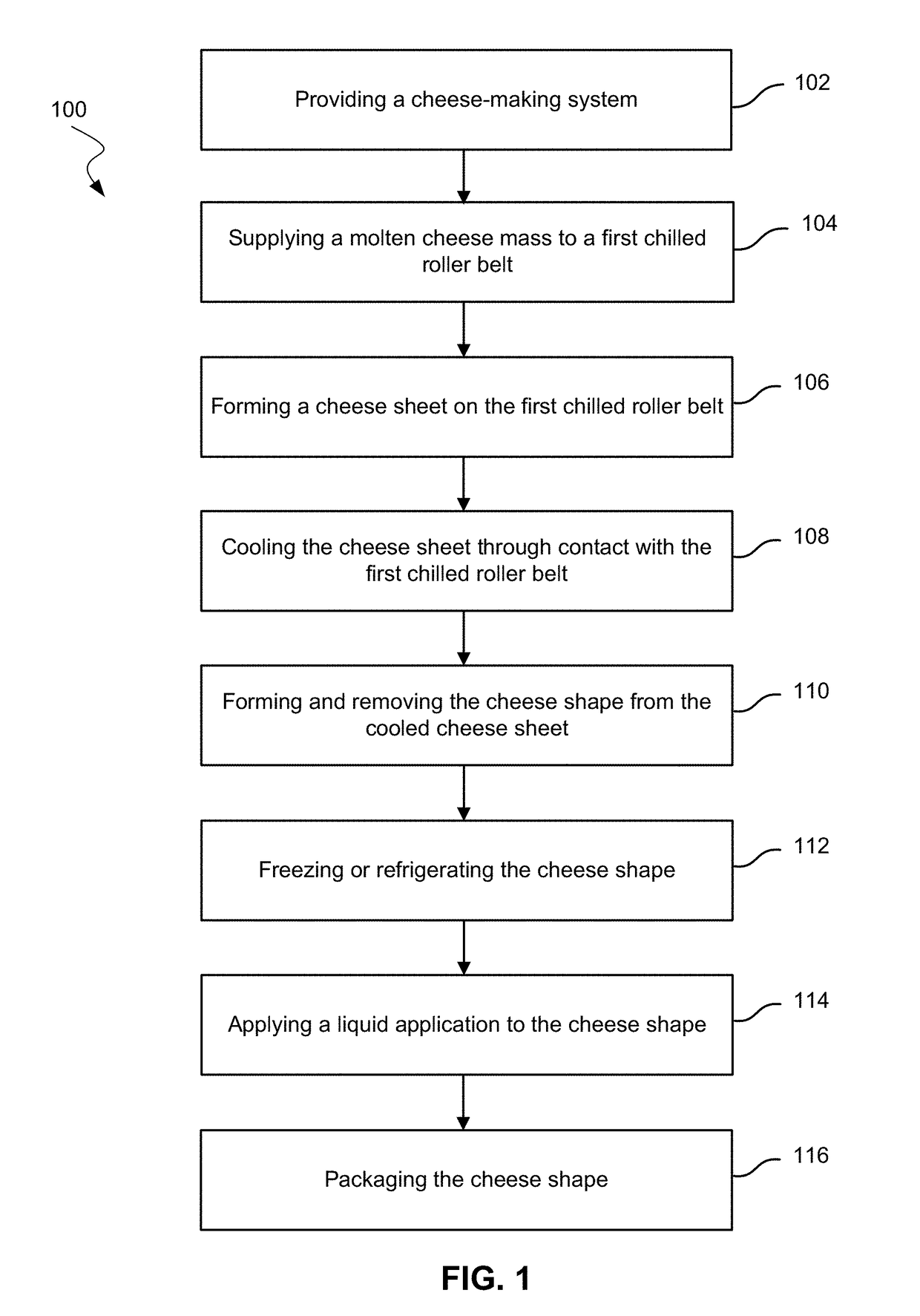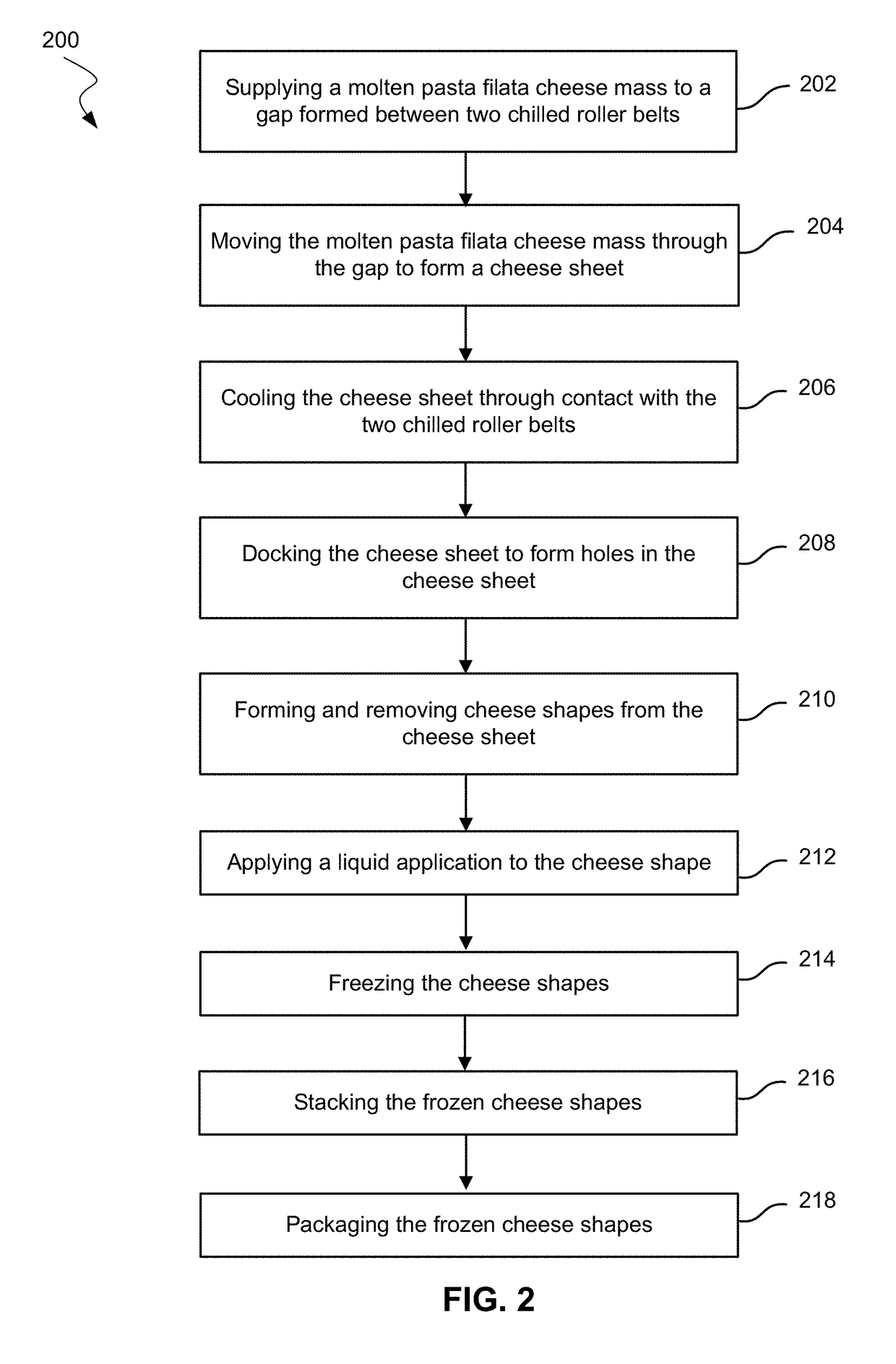Methods and systems of making cheese forms
- Summary
- Abstract
- Description
- Claims
- Application Information
AI Technical Summary
Benefits of technology
Problems solved by technology
Method used
Image
Examples
example 1
[0119]A low-moisture, part-skim mozzarella cheese mass was prepared by forming a cheese curd followed by heating kneading and stretching in the presence of heated water (140 to 180° F.) to achieve a heated (125 to 160° F.) cheese mass. The heated cheese mass then was transferred to a mixer in which ingredients (slurry and dry powder) were mixed into the heated cheese mass.
[0120]The final heated cheese mass was then formed into cheese shapes by forming a cheese sheet having a thickness of between 1 / 16 in to ½ in and cooled to between 30 and 50° F. as described in Examples 2-4.
example 2
[0121]The cheese mass described in Example 1 was sheeted to ⅛ in in thickness and cooled to about 45° F. From the cooled cheese sheet, discs were cut that measured 12 inches in diameter.
[0122]The effect of holes, docking, and liquid application was tested for meltability, oil-off, blister size, and blister coverage on pizzas. The cheese disc was either docked with small holes, patterned with large holes with a diameter of 0.25 in, both docked and patterned, or not docked or patterned at all (base disc). These discs were either not treated with any liquid application, treated with a surfactant, or treated with Vegalene®. The surfactant solution is applied at 2.5% rate to the cheese by weight. The active surfactant in the applied solution was 10 to 400 ppm, and the active surfactant in the final cheese was 0.25 to 10 ppm. A non-dairy fat such as Vegalene® is a food spray and applied at 1.5% rate by weight. It contains vegetable oil, soy lecithin, flavor, beta-carotene, and propellant....
example 3
[0124]The cheese mass from Example 1 was sheeted to ⅛ in and cooled to about 45° F. From the cooled cheese sheet, discs were cut from the cheese that measured 12 in in diameter.
[0125]The effect of different liquid application was tested for meltability, oil-off, blister size, and blister coverage on pizzas. The cheese disc was docked with small holes. These discs were either not treated with any liquid application, treated at a rate of 2.5% with surfactant solution (containing 0.2% surfactant), treated at a rate of 2.5% with dairy fat (containing 20% fat), or treated at a rate of 2.5% of a dairy fat (containing 40% fat). Frozen discs of cheese were prepared and then thawed under refrigerated condition for two days. The pizza crusts with cheese discs applied as prepared are shown in FIG. 9. The pizza was prepared by having the pizza dough sheeted, the sauce applied, and then the cheese disc applied onto the unbaked pizza. The pizza was cooked at 460° F. for 6.5 minutes in a conveyor ...
PUM
 Login to View More
Login to View More Abstract
Description
Claims
Application Information
 Login to View More
Login to View More - R&D
- Intellectual Property
- Life Sciences
- Materials
- Tech Scout
- Unparalleled Data Quality
- Higher Quality Content
- 60% Fewer Hallucinations
Browse by: Latest US Patents, China's latest patents, Technical Efficacy Thesaurus, Application Domain, Technology Topic, Popular Technical Reports.
© 2025 PatSnap. All rights reserved.Legal|Privacy policy|Modern Slavery Act Transparency Statement|Sitemap|About US| Contact US: help@patsnap.com



